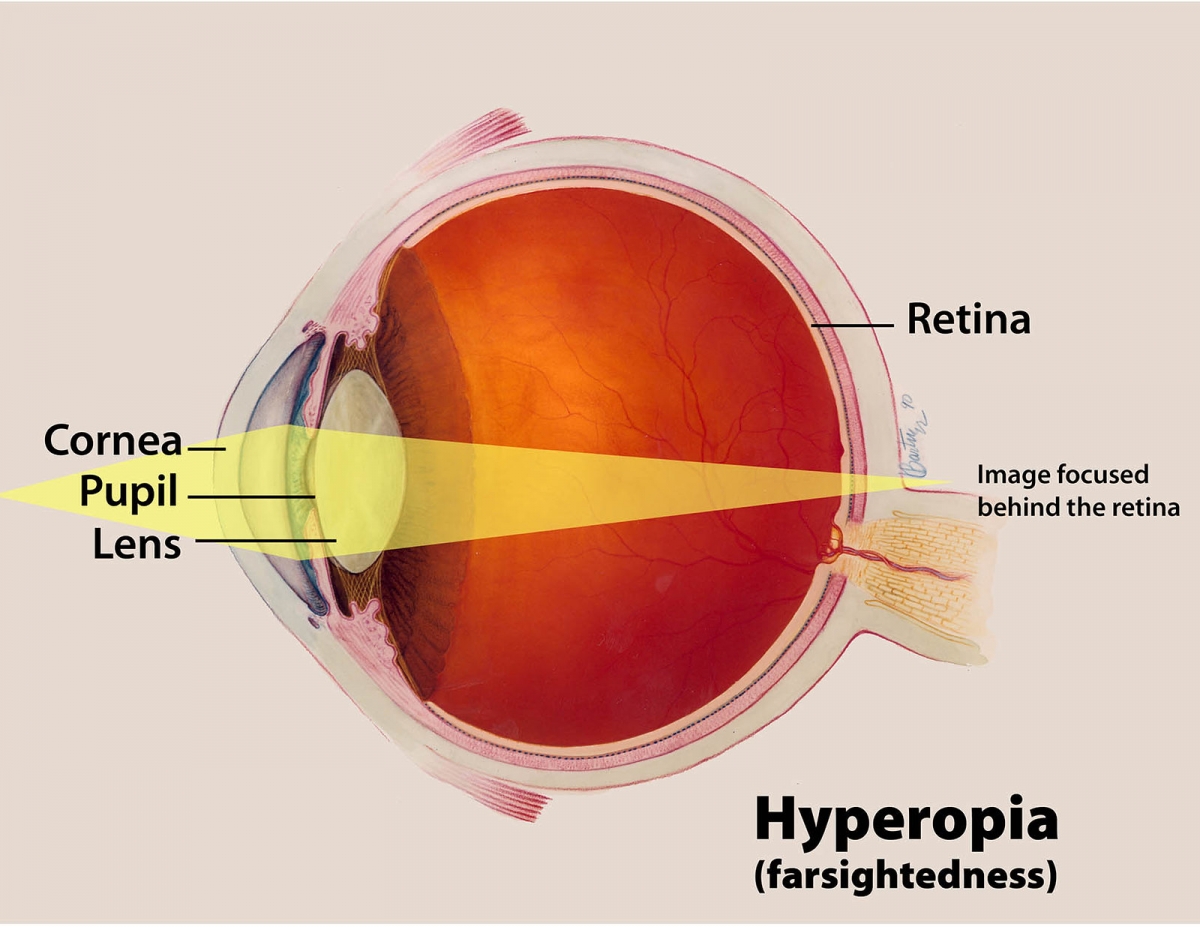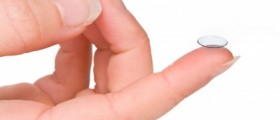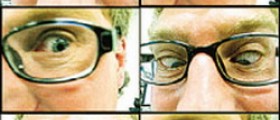If you have just been diagnosed with hyperopia, the name of the condition may confuse you. However, you have probably heard of a vision problem named farsightedness or longsightedness. Well, hyperopia is a synonym for the condition hidden behind these names.

Definition
Hyperopia, as it was mentioned above, is a vision problem manifesting through one's inability to focus his/her sight on any nearby objects, due to eye imperfections regarding the eyeballs or the eye lens. Some cases of hyperopia involve people not being capable of focusing on any observed objects, regardless of their proximity.
Basically, people suffering from hyperopia see nearby or approaching objects blurry. Yet, this condition is not to be mistaken for presbyopia since it only affects people due to the natural aging process of the eye. In hyperopia, the eyeball is too short or the cornea is too flat, making a person unable to focus his or her vision in certain situations.
Classification
Namely, hyperopia can be classified into several subclasses, based on the manifestation of this condition, the appearance, the severity and the relationship to the eye's accomodative status.
Therefore, depending on the clinical appearance, hyperopia can be divided into simple, pathological and functional.
As far as causes of hyperopia are concerned, there are many factors which can lead to the appearance of this condition. First of all, babies in general are born with a slight case of this condition. However, as they grow older, the hyperopia disappears.
In milder cases of hyperopia, our eye lens manages to accommodate to the annomalies in the size of the eye, bringing the image back to the retina. However, this period of accommodation, when repeated too often, may result in headaches and eyestrain, even though the observer may have no problems focusing objects which are both far and near.
On the other hand, if the lens is not capable of dealing with the problem, the image may appear blurry, especially when close objects are observed.
Some other causes of hyperopia may be sinus infections, injuries, migraines, genetic factors or the simple deterioration of the eye which usually goes hand-in-hand with aging.
Diagnosis
Due to the fact that one's sharpness of vision is affected by many of the factors mentioned above, doctors need to take all of these into consideration when diagnosing their patients.
Sometimes, a person may have good visual acuity, even though he/she may suffer from hyperopia to a certain extent. In order to avoid triggering this situation, it is important that the patient's eyes are relaxed before the eye exam. In order to achieve this, doctors usually use eyedrops which make the things that the patient needs to read blurry, helping the doctor get insight into the severity of one's condition. However, if this is the case, the patient will need to have someone drive him/her home, since the effect of the eyedrops may take time to wear off.
Once the accommodation of the eyes is relaxed, the doctor will use a retinoscope in order to assess the patient's visual health. Alternatively, the doctor may ask the patient to read and interpret certain signs while changing the types of lenses which are placed in front of his/her eyes.
When the class and characteristics of the hyperopia have been diagnosed, the patient receives corrective lenses which he/she should wear in order to treat this condition.
Unfortunately, bearing in mind that hyperopia starts at the very moment of birth, it is a condition which can only be treated later, not prevented before it actually appears.
Surgery presents an additional treatment method, usually recommended to severe cases of hyperopia, where the lenses fail to help. Unfortunately, there are still no surgeries which can deal with this problem effectively enough, even though different methods are being developed and perfected as we go through these lines.
According to a research carried out in Australia by Australia's Health in 2004, 22.4% of the entire population of this country suffered from hyperopia. As for the US, one person in every 4 individuals suffers from this condition. This means that 60.9 million people in the US suffer from hypopia, counting for 22.49% of the population.
Back to Australia, according to the National Health Survey of 2001, 1,867,000 men reported that they were suffering from hyperopia. Moreover, 2,343,000 women were walking in the same shoes.
To sum up, hyperopia, or long-sightedness is a condition manifesting through one's disability to focus his/her eyesight on nearby objects. Most people are born with this condition, but their eyes manage to overcome it as they grow up. Those who are not that lucky experience this vision issue later in life as well. Fortunately, hyperopia can be treated through a proper diagnosis and lens prescription. The lenses correct one's vision and enable the eye to focus on nearby objects without perceiving them as blurry.
So, if you experience any signs of hyperopia, seek medical assistance and have the problem treated.
- medlineplus.gov/ency/article/001020.htm
- medlineplus.gov/refractiveerrors.html
- Photo courtesy of National Eye Institute by Flickr: www.flickr.com/photos/nationaleyeinstitute/20258792625/

















Your thoughts on this
Loading...